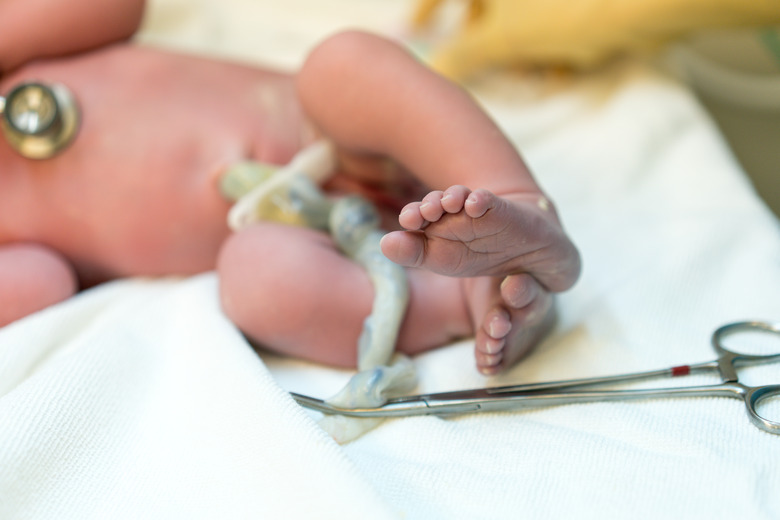What Are 3 Functions Of The Umbilical Cord?
The umbilical cord is a connection between the mother and the developing fetus. The umbilical cord has three functions for the developing fetus: it supplies oxygen, it delivers nutrients, and it helps to withdraw blood rich in carbon dioxide and depleted in nutrients. Blood from the umbilical cord can also be used to treat a variety of diseases, much like bone marrow.
Significance
Significance
One of the the defining features of all mammals is the presence of the umbilical cord. In humans, the umbilical cord is generally severed after birth. However, most mammals, lacking both surgical equipment and the dexterity to manage it, have alternative ways of dealing with the umbilical cord. Some mammals chew it off. Others allow it to dry and decompose on its own.
History
History
The umbilical cord develops from two separate fetal origins. The yolk sack and the allantosis both comprise the umbilical cord. As a result, both are formed from the the fetal tissue and can be thought to be part of the fetus.
Function
Function
The umbilical cord has three separate functions. Primarily, it serves as a blood source for the neonate. This is especially important because the fetus is unable to breathe (having neither functioning lungs nor an oxygen source) and thus allows the fetus to obtain the oxygen it needs to live. Because the fetus has no way of intaking food, the umbilical cord also serves as a source of nutrients, including calories, proteins, fats, as well as vitamins and nutrients. Finally, the umbilical cord also serves to transfer waste products and deoxygenated blood away from the fetus to the maternal circulation, where it can be processed and excreted.
Features
Features
The umbilical cord is made up of a substance called Wharton's Jelly, instead of normal connective tissue and skin. Inside the cord is one vein, which contains oxygenated blood, and two arteries. The umbilical vein goes all the way to the fetus's liver, where it splits into two. One part of the vein supplies blood to the hepatic poral vein, which supplies blood to the liver. The other branch, which is known as the ductus venosus, supplies 80% of the blood to the human body, allowing oxygen and other vital nutrients to circulate throughout the fetus.
Considerations
Considerations
Umbilical cord blood is a valuable commodity in the medical community. Cord blood, which can be extracted once the placenta has been expelled, is rich in stem cells that can be used to treat many blood and immunological disorders, as well as some cancers. Stem cells carry an advantage over a bone marrow transplant because the donor does not need to be an exact match for the recipient. There are many blood banks, both private and public, for the deposition of umbilical cord blood.
Cite This Article
MLA
Cloe, Adam. "What Are 3 Functions Of The Umbilical Cord?" sciencing.com, https://www.sciencing.com/what-functions-umbilical-cord-4672809/. 13 March 2018.
APA
Cloe, Adam. (2018, March 13). What Are 3 Functions Of The Umbilical Cord?. sciencing.com. Retrieved from https://www.sciencing.com/what-functions-umbilical-cord-4672809/
Chicago
Cloe, Adam. What Are 3 Functions Of The Umbilical Cord? last modified March 24, 2022. https://www.sciencing.com/what-functions-umbilical-cord-4672809/
